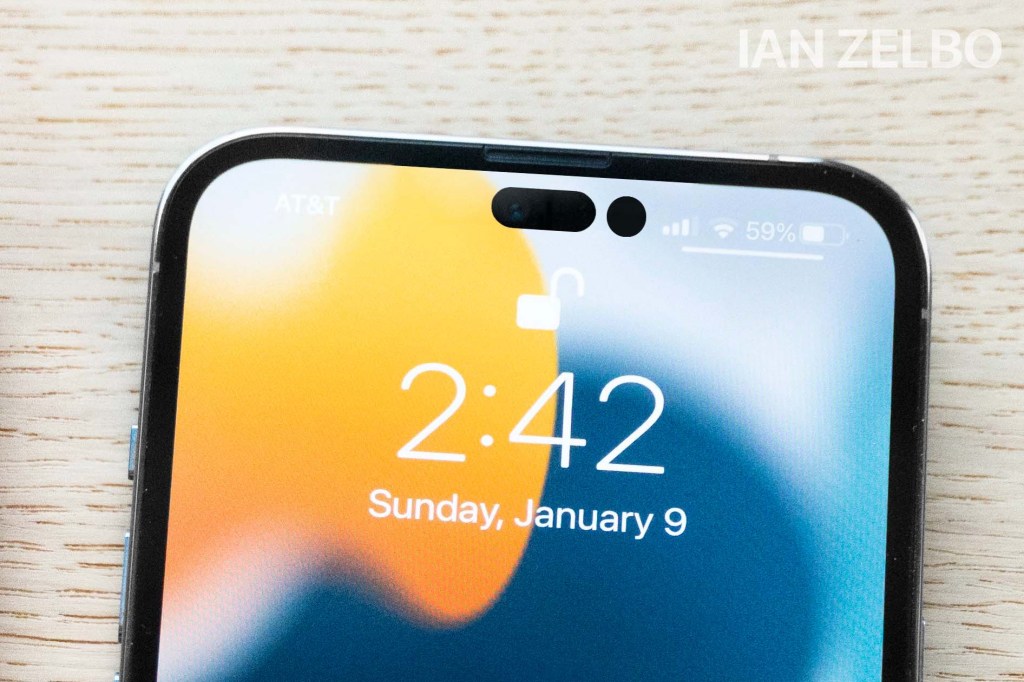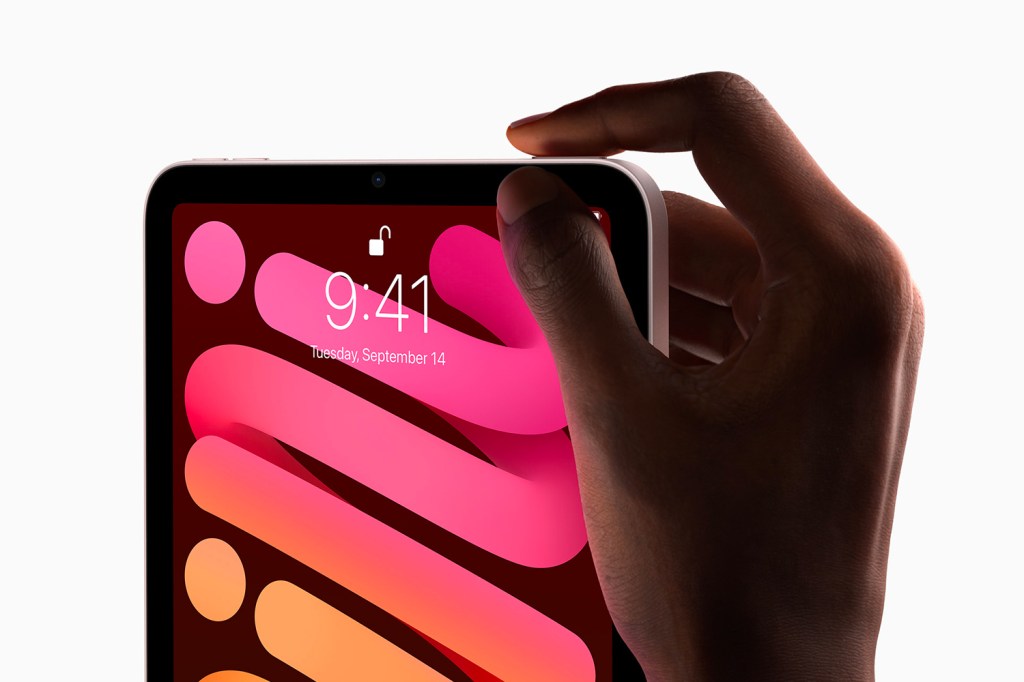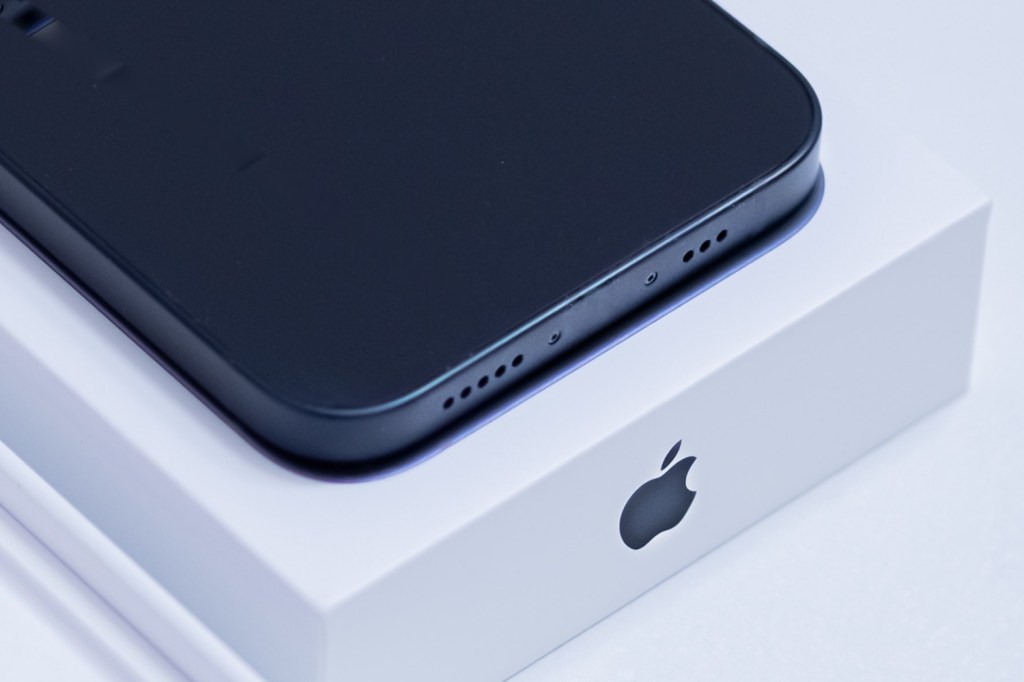
With the spectacle of Apple’s developer event (WWDC 2022) now very much in the rearview mirror, the iPhone 14 launch is the next major event on the Apple calendar – and this year’s new iPhone rumours are as sweet as ever – here’s what we know about the iPhone 14 so far as well as our best guesses for everything else.
Last year brought us the iPhone 13 and iPhone 13 Pro, a typically powerful flagship duo, while earlier this year we’ve already been treated to one new Apple phone in the iPhone SE 3, which is the handset to consider you’re looking for the best cheap iPhone right now.
However, an even bigger update is now just around the corner in the iPhone 14 and iPhone 14 Pro. Apple is rumoured to be introducing an all-new design with this year’s line-up, which will showcase the best new iOS 16 features as well as offering plenty of hardware upgrades. In fact, it may be that Apple gives us four new iPhone 14 models, if one bit of speculation is to be believed, with more hardware separation between the regular and Pro versions and the removal of the Mini from the range. Read on as we reveal all the latest iPhone 14 rumoured specs, price and release date.
Additional reporting by Dan Grabham and Tom Morgan-Freelander
iPhone 14: rumoured specs and design
According to rumours, Apple won’t be releasing an iPhone 14 mini. Instead, we expect to see an iPhone 14 and 14 Pro (both with 6.1in screens), along with a 6.7in iPhone 14 Max (which replaces the mini) and Pro Max. Arguably the single biggest iPhone 14 rumour is that this year’s line-up will also usher in a new design for the flagship models. We’ve heard noises about this since back in January, when the ‘dash dot’ camera cut out first reared its head, and we’ve since seen some pretty convincing images of an iPhone 14 Pro Max with no notch.
Rumours suggest only the iPhone 14 Pro and iPhone 14 Pro Max will be getting the new look cutout, with the iPhone 14 and iPhone 14 Max sticking with the now-familiar notch. We could also potentially see in-display fingerprint sensors make an appearance, similar to thpse found in most Android flagshgips.
Seeing what the next iPhone might look like in static images is one thing, but YouTuber Sam Kohl aka iUpdate has gone one better and made an iPhone 14 ‘hands-on’ video featuring dummy units he made based on the latest design rumours.
Speaking of iPhone cameras, we’ve already said that the front snapper might look a little different on the display. What might also happen is a major hardware change that gives the iPhone 14 a huge selfie cam upgrade. That’s according to supply chain whiz Ming-Chi Kuo of TF International Securities, whose latest prediction points to a device featuring a 6P lens instead of a 5P one (aka, an extra lens layer to further reduce distortion), while enjoying a brighter f/1.9 aperture to boot.
In terms of rumoured raw camera specs, the Apple iPhone 13 Pro and iPhone 13 Pro Max are both likely to have a triple rear camera array, made up of a main wide sensor, ultra wide sensor, and a telephoto sensor. There have also been whispers that the iPhone 14 Pro models would feature a wide angle camera with an 1/1.3-inch 48MP CMOS image sensor with support for 8K video recording but it is still very early days.
Under the hood, Apple typically unveils a new chip to power its flagship each year, which in 2022 would mean the advent of the Apple A16. That processor will come to pass this autumn, though how many new iPhones it features in is up for debate. The latest gossip suggests that only the iPhone 14 Pro and iPhone 14 Pro Max will get an Apple A16 chip, with the more entry-level iPhone 14 and 14 Max sticking with an upgraded version of the A15 from 2021.
Ming-Chi Kuo doubled down on this view in early July, suggesting the move would see Apple ship significantly more Pro models than it did with the iPhone 13 line-up.
Initial rumours suggested there could also be room for up to 8GB of RAM in some iPhone 14 Pro models, but a subsequent report from Digitimes Asia says it’ll be 6GB of RAM across the board. The difference will apparently be speed: while the iPhone 14 will get LPDDR4X memory, the more powerful Pro models will get faster LPDDR5 instead. This would make a change from the current two-tier line-up, with the iPhone 13 and iPhone 13 Mini using 4GB of DDR4 RAM, and the iPhone 13 Pro and 13 Pro Max getting 6GB of DDR4.
Connectivity-wise, Apple is expected to use Qualcomm’s Snapdragon X65 modem from 2021 – the first 10 Gigabit 5G modem and antenna system for smartphones, for improved performance. This clever bit of kit also unlocks the possibility of potential satellite-based emergency features that could let users send texts in emergency situations where there’s no signal. Wi-Fi 6E, the latest and greatest version of Wi-Fi, would also be included.
Elsewhere, Android fans will no doubt smirk at the idea that the next iPhone is being linked with an always-on display. This is a smartphone feature that’s proved to be hugely popular on devices powered by the Google-designed mobile operating system. The always-on display may include the recently-announced iOS 16 lock screen widgets.
In terms of storage space, anyone hoping for an end to the minimum 128GB option might be disappointed. According to Haitong International analyst Jeff Pu, the upcoming iPhone 14 Pro models will continue to start with 128GB of storage.
Potential iPhone 14 launch and release dates
We can talk about the likely iPhone 14 release date with more confidence than most other upcoming smartphones, as Apple has stuck to an early September launch for its flagship each year pretty religiously. The latest rumours suggest Apple has settled on 7 September for its reveal event, with devices going up for pre-order shortly after. Bloomberg’s Mark Gurman has said Apple store employees are being prepped for handsets to go on sale on the 16th.
Main article: Here’s when we expect the iPhone 14 launch and release date to be
That’s a week earlier than usual on both counts. If we take a look at the last handful of iPhone release dates, the only real outlier is 2020’s October launch during peak Covid. Depending on the device, Apple might not start shipping it until October or November, but the Cupertino-based tech giant has historically revealed its new iPhones on the first or second Tuesday of September.
Take a look and see for yourself:
- iPhone 13 release date: September 24, 2021 (launched September 14)
- iPhone 12 release date: October 23, 2020 (launched October 13)
- iPhone 11 release date: September 20, 2019 (launched September 10)
- iPhone XR release date: October 26, 2018 (launched September 12)
- iPhone XS release date: September 21, 2018 (launched September 12)
- iPhone X release date: November 3, 2017 (launched September 12)
- iPhone 8 release date: September 22, 2017 (launched September 12)
- iPhone 7 release date: September 16, 2016 (launched September 7)
Typically, the new iPhone gets released about 10 days after the launch and we see no reason why that would change this year (although it could be possible that one or two models may be later
Here’s how much we think the iPhone 14 will cost
The price of the iPhone 14 will depend on which model you opt for, with the standard iPhone 14 model being considerably cheaper than a top-of-the-line iPhone 14 Pro Max. Pricing also invariably depends on how much storage you want on your handset. To give an example of the discrepancy, the iPhone 13 can cost as ‘little’ as £779 for the cheapest 128GB model – or set you back an eye-watering £1549 if you go for a 1TB iPhone 13 Pro Max.
Unfortunately, that doesn’t look likely to change with the iPhone 14 family. The next Apple flagship could be its most expensive yet, if anything. According to one analyst, Apple is considering an iPhone price hike outside of the US as it looks to balance the books in an uncertain economic climate.
This is further bolstered by a more recent take by TF International Securities analyst Ming-Chi Kuo, who believes that we could see a price rise as high as 15 per cent.
Whatever the case, the best indication we have of starting iPhone 14 price points is the last generation. An extra hundred bucks or so may get slapped on, but it’s likely to stay in the same ballpark, as Apple might say out in California.
- iPhone 13 price: from $799/£779
- iPhone 13 Pro price: from $999/£949
- iPhone 13 Pro Max price: from $1099/£1049
If the iPhone 14 price does go north, it’s worth remembering that Apple hasn’t increased the price of the iPhone for a few years, and typically does so when it introduces a design overhaul or major new feature set – both of which could be on the cards with the iPhone 14.
Dream iPhone: 7 things we’d love to see from iPhone 14
As well as all the iPhone 14 rumours already doing the rounds, there’s plenty of things we’d like to see from the 2022 iPhone 14. Some are releated to the gossip we’ve heard, others purely gleaned from the warped minds of Team Stuff.
1. Kick the notch to the curb

You probably won’t be surprised by this addition to the list, but it’s time for the notch to go. The notch at the top of the iPhone display has been around since the iPhone X in 2017, and selfie cameras have evolved since then.
Numerous Android smartphones have switched to a hole punch style camera, which is just a cut-out for the camera–no extra borders. Some have even trialled an under-screen camera, though they’re a few years away from being Apple-standard.
Early reports have suggested that Apple is working on a hole punch style camera, but there’ll be two of them. One cut-out for the camera, another for the Face ID sensors. It’s a design choice that will take some getting used to (if we’re putting it nicely), but it’s still a step-up from the notch.
However, one point to consider that brings this dream crashing down is the notch on the 2021 MacBook Pro. The notch on the laptop seems to suggest Apple is adding more notches rather than taking them away, which doesn’t bode well for the iPhone’s notch.
2. The return of Touch ID

As people have been masked up over the past couple of years, Face ID has shown a glaring flaw… it needs to see your face. Apple has implemented some workarounds, such as using the Apple Watch to unlock your iPhone, or even ignoring the mask in iOS 15.4 (which works well in the beta we’ve used).
But, these solutions have been patchy, and not quite as elegant as we’d expect from Apple. Plus, Face ID being able to recognise you with a mask on does pose some security questions.
What better time to bring Touch ID back to the iPhone, either under display or in the power button, like the latest iPad mini. It’s faster, more reliable, and beloved by everyone. Plus, if Apple includes both Face ID and Touch ID on the iPhone 14, it’ll be the most secure smartphone available on the market.
3. 8K video recording
We’ve seen a few rumours that 8K video recording is coming to the iPhone 14, and it’s a massive “Yes please!” from us.
The iPhone is already the best smartphone for video recording, and 8K capabilities will just catapult the iPhone 14 to a whole new level. We’re beginning to see 8K displays become more commonplace, so it’s time you could record content to watch in all those crispy pixels.
4. Remove all the ports (yes, it’s time)

Perhaps controversially, it’s time for Apple to remove the ports from the iPhone, starting with the iPhone 14.
The Lightning connector can no longer cut it, with USB-C taking the crown as the de-facto standard. It’s much faster, more efficient, and it’s making its way to some Apple devices. But we’ve expected Apple to remove the ports from the iPhone for a long time, so let’s skip USB-C and go straight there.
The Apple Watch Series 7 showcased a new file-transfer using the wireless connector for recovery. If you can charge, move files, and manually recover your iPhone all from MagSafe, why do we need the port? Granted, USB-C would be slightly faster, but this wireless connection is already better than Lightning, even before Apple has adapted it for the iPhone.
Couple this with almost everyone using wireless headphones, e-SIMs, and AirDrop, it’s time to get rid of all the ports from the iPhone, once and for all. Let’s see Jonny Ive’s design aspiration for the iPhone come true, it’s about time.
5. Periscope cameras
Periscope camera technology involves multiple camera lenses at an angle, to decrease a smartphone camera’s size, improve zoom, and increase the megapixel count. We’ve seen Samsung’s flagships introduce the camera, and now we want it to come to the iPhone.
Introducing a periscope camera on the iPhone 14 would allow Apple to finally remove the camera bump, match Samsung’s zoom capabilities, and improve picture quality. The iPhone already boasts some of the best camera technology available, so why not add the latest-and-greatest as well.
6. The return of 3D touch

Another potentially controversial feature we want to see return to the iPhone 14 is 3D Touch. The last iPhone range to include the feature was the iPhone XS in 2018, but it’s time for the feature to return.
3D touch included an extra screen layer on the iPhone that allows you to press a deeper level of the screen. For those that can’t remember, it’s like Haptic Touch… but better.
It’s unlikely that Apple will bring this feature back after killing it off, but we’d love to see it. It was a completely unique feature that had promise to bring an extra dimension to the iPhone. 3D Touch never got the love it deserved, and we’d love to see it back.
7. iPhone on Subscription
According to reports, Apple is working on a subscription model for its hardware products, specifically the iPhone. With this subscription, you’d be renting an iPhone rather than buying it outright or paying it off over a contract.
With a subscription like this, you may actually end up saving money on your iPhone package, with the bells and whistles thrown in too. Think your iPhone, AppleCare, and Apple One all in one monthly subscription.
Apple wouldn’t need any extra tech to make this work, so we see no reason this wouldn’t be ready to launch alongside the iPhone 14.
Is that all?
You’ll notice that we didn’t include anything about the iPhone’s design or chipset. The early leaks of the iPhone 14 design from Jon Prosser show the device returning to an iPhone 4-esque design. We absolutely love it, but Apple’s already working on it.
As for the chip, Apple blows us away with performance every year, so we didn’t want to waste one of our wishes on a more powerful chip.
Additional words by Connor Jewiss






